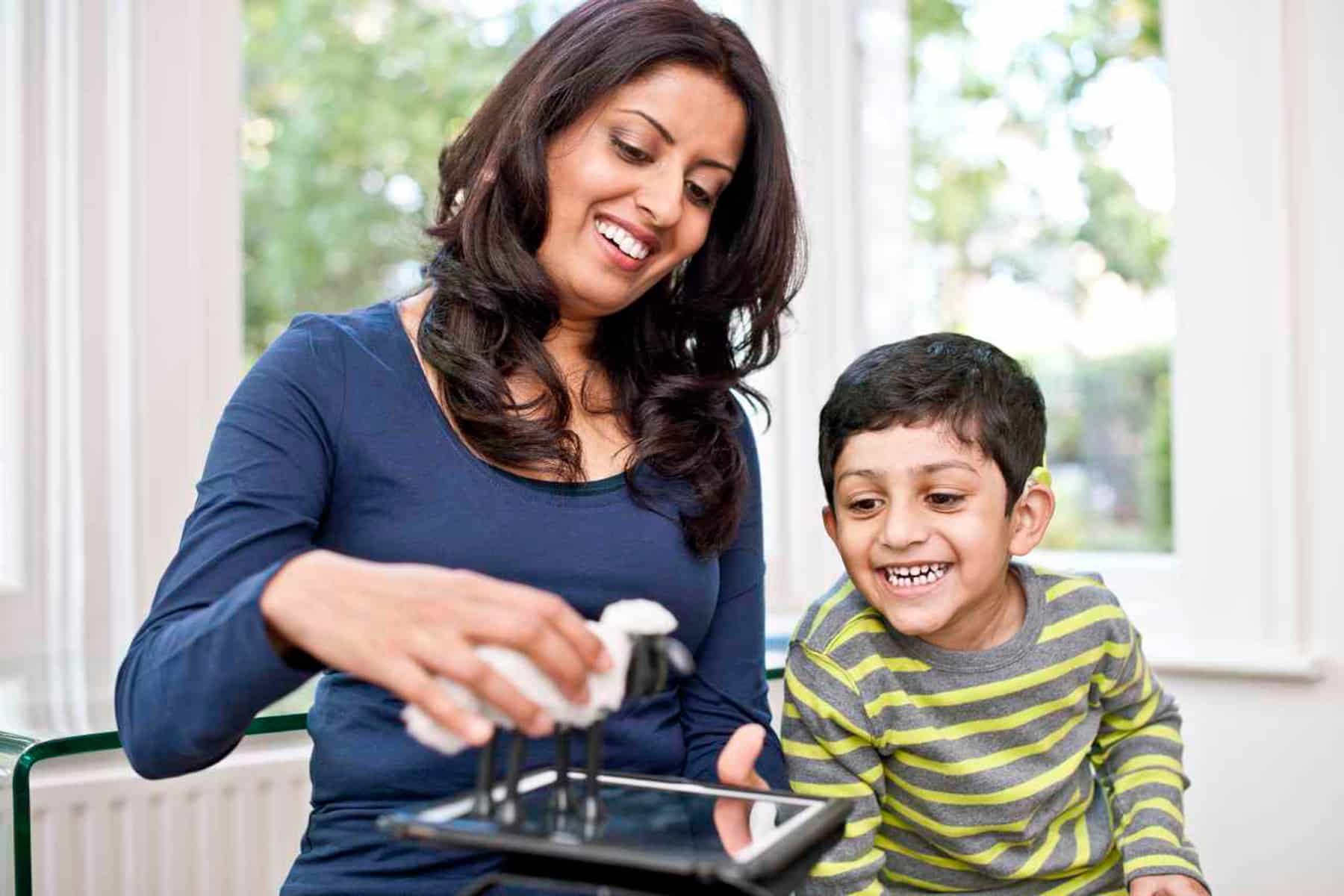MED-EL
Published Mar 18, 2016
4 Ways Pretend Play Helps Your Child

Pretend play is simple, you can do it just about anywhere, and it helps your child develop a whole range of skills that will help them throughout their life.
What is pretend play? It’s simple: any game, activity, or storytelling that uses imagination.
There are lots of different skills that it helps to build, and here are four big ones:
Theory of Mind Skills
Theory of Mind (ToM) is, more or less, the idea that you and everyone around you have your own thoughts—and that you understand that these thoughts might be different. The skills that make up the Theory of Mind are developed early in childhood, and a great way to help your child develop them is through pretend play.
One way to do this is by playing with dolls with your child. Pretend playing gives your child the ability to have conversations and understand the thoughts that each different doll has. You can talk, have arguments, negotiate, tell jokes, express feelings and talk about the likes and dislikes of others in the scene. All the while, make sure to highlight that the characters’ thoughts are different from one another.
We’ve got lots more about Theory of Mind that you can read, for example: This one all about Theory of Mind, and 4 other activities to develop your child’s Theory of Mind skills.
Social Skills
Pretend play with dolls can also help your child with their social skills: for example, by trying out different ways to behave with people around us.
Just grab two dolls and start a conversation! You can begin by playing the part of both dolls, to show your child how conversation flows back and forth—and to use common phrases that your child might use out in public. Then, start including your child: have your child pretend to be one of the dolls and ask them questions. This way they’ll have heard you pretend play a conversation, and then will have to think on their own about the best way to respond.
For more about building social skills, read this blog post about how to help build your child’s conversation skills.
Understanding their Feelings
Pretend play can help your child to understand and develop their feelings and emotions. By imagining or playing with dolls, you can give your child the chance to express and think about their feelings in a safe and productive environment.
If your child has come home from school and seems frustrated or happy with something specific, you can engage in pretend play. You could either play out situations that are similar to what your child experienced to help them better understand what happened, or you could play out different situations to help them learn about the other possible outcomes.
Another great way to help your child to better understand their feelings is to create an experience book about the situation.
An experience book is a homemade book that you put together with your child, by collecting pictures or drawings that tell a personal story.
For example, if your child gets frustrated with a friend or classmate then draw up a story or pretend play scene with two characters, where one makes the other feel frustrated. Talk about what each of the different people in the story feel, and why they might feel that way. Use language that your child will understand, and write an ending to the story that provides a possible solution or way to manage the feelings and the situation. This will help your child to develop an understanding of ways to manage their frustration more easily.
If your child is showing frustration, here are 6 other ways to help your child get past their frustration.
Divergent Thinking
Divergent thinking means starting with one central idea and thinking up many different solutions, outcomes, or stories that could come out of it. Pretend play is a great way to imagine all these different solutions because, unlike real life, you can always hit the “reset” button and play out lots of different possibilities.
For example, you could with your child imagine what you’d do for fun on a Saturday afternoon. Start by asking your child a general question, like “What should we do this afternoon?” and then shape your child’s divergent thinking skills by adding in information that may need to change their original thinking.
For example:
- You: “What should we do this afternoon?”
- Child: “Let’s go to the park!”
- You: “But it’s raining outside. Is there something we can do where we don’t have to go outside?”
- Child: (understands that going outside is not the only possibility) “We could play a game inside, at home!”
- You: “We could play a game inside at home. That’s a great idea. Is there anything else that we could do inside?”
- Child: (understands that there are many different activities that can be done while staying inside) “We could play a board game! Or even do some cooking!”
- You: “Great ideas. If we played a board game together, what board game would you like to play?”
- Child: (understands that there are different board games to choose from) “Let’s play Chutes and Ladders!”
By presenting your child with additional information, you can help them to consider that there are lots of different outcomes that could come from a single starting point.
Ready to get started with pretend play? To get some inspiration, check out these 8 tips for playing games with your child.
This post was written with help from Joanna Brachmair, a rehabilitation specialist at MED-EL.
MED-EL
Was this article helpful?
Thanks for your feedback.
Sign up for newsletter below for more.
Thanks for your feedback.
Please leave your message below.
Thanks for your message. We will reply as soon as possible.
Send us a message
Field is required
John Doe
Field is required
name@mail.com
Field is required
What do you think?
MED-EL


